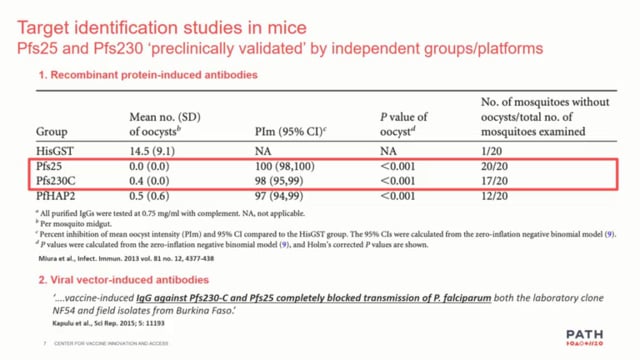Last Updated: 03/02/2025
Development and early clinical evaluation of a novel mechanism-of-action antimalarial
Objectives
The overall objective of this project is to introduce a new class of malaria drug to combat drug resistance and that have the potential to prevent malaria.
Malaria is an infectious disease caused by a parasite that is spread by mosquitos, and which nearly half of the world’s population are at risk of contracting – including military personnel deployed to areas where the disease is common. Malaria frequently causes severe symptoms including fever, chills, headaches, vomiting, diarrhea, pain in the abdomen, muscles, and joints, and debilitating fatigue. Furthermore, approximately 400,000 people die as a result of malaria infection (World Health Organization, 2021). While there are drugs available to treat and to prevent malaria, these drugs are becoming less effective as the parasite evolves to evade them, a process known as drug resistance. As the malaria parasite becomes more resistant to currently available drugs, the risks of contracting and dying from the disease increase. To prevent this, it is crucial to develop new drugs to treat malaria, particularly drugs that work in new ways (new “mechanisms of action”), enabling them to kill parasites that have developed resistance to existing drugs. The longstanding partnership of researchers at the Broad Institute and pharmaceutical experts at Eisai, Inc. has discovered a family of new drug candidates for malaria treatment. These compounds attack the malaria parasite through a novel mechanism of action: by blocking the function of an enzyme that the parasite needs to make new proteins (the building blocks of life). If the parasite is unable to make new proteins, it cannot survive or reproduce. The malaria parasite has a complex life cycle and takes different forms in the human body; the family of new compounds that were discovered was able to kill the parasite in each of its key forms in laboratory experiments. This is considered an important asset in a malaria drug as it provides multiple opportunities to kill the parasite or prevent it from developing into an infection. Initial PRMRP funding (PR151269) enabled the evaluation and ultimately selectction of one promising member of this family of drugs, named BRD5018, for further studies. A second PRMRP funding (PR170730) allowed obtaining sufficient data to demonstrate that BRD5018 blocked the parasite enzyme, but not the corresponding enzyme that human cells need to make proteins. This suggests it will be safe to use in people with malaria. Then the properties of BRD5018 were studied in extensive laboratory and animal tests. These studies showed that BRD5018 possesses the necessary safety and metabolic profiles to support development as a drug. In addition, BRD5018 was able to effectively treat malaria in mice, including with a single dose. Finally, the research support allowed us to develop a new, more cost-effective method to manufacture BRD5018 in large quantities. Building on the success of the previous PRMRP-funded research, the program is now ready to complete the final preparations for a clinical trial in humans. The specific aims of this project are: (1) manufacture the first batch of the raw drug to the quality and safety standards needed for human trials; (2) formulate the raw drug into tablets and manufacture sufficient tablets for the clinical trial; (3) develop and validate testing methods to study how the drug behaves in humans; (4) prepare the necessary documents to request approval from regulators, such as the U.S. Food and Drug Administration, to conduct a clinical trial; and (5) plan and conduct a clinical trial in healthy people, which is designed to determine how safe the drug is and how it behaves in the human body. This trial will take place at a U.S. Army research site in Kenya with extensive experience. If successful, development and eventual approval of BRD5018 as a novel mechanism of action drug will provide a much-needed new tool to combat increasing drug resistance in malaria in communities around the world. Furthermore, current data indicate that BRD5018 could treat malaria with a single dose, which would provide important logistical advantages over current therapies and potentially improve compliance. These features would have a direct effect on the ability to preserve mission readiness of Service Members deployed to malaria-endemic regions. Finally, successful completion of this project plan would comprise a major step towards demonstrating that the enzyme inhibited by BRD5018 is a good target for treating malaria in humans. This could enable the development of additional drugs that both treat and prevent malaria. As such, the proposed project directly addresses a FY21 PRMRP Topic Area – Malaria and FY21 PRMRP Area of Encouragement – identification of novel and/or innovative malaria drug targets.
Oct 2020 — Sep 2021
$4.39M

